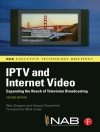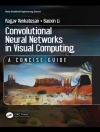Flying insects are intelligent micromachines capable of exquisite maneuvers in unpredictable environments. Understanding these systems advances our knowledge of flight control, sensor suites, and unsteady aerodynamics, which is of crucial interest to engineers developing intelligent flying robots or micro air vehicles (MAVs). The insights we gain when synthesizing bioinspired systems can in turn benefit the fields of neurophysiology, ethology and zoology by providing real-life tests of the proposed models.
This book was written by biologists and engineers leading the research in this crossdisciplinary field. It examines all aspects of the mechanics, technology and intelligence of insects and insectoids. After introductory-level overviews of flight control in insects, dedicated chapters focus on the development of autonomous flying systems using biological principles to sense their surroundings and autonomously navigate. A significant part of the book is dedicated to the mechanics and control of flapping wings both in insects and artificial systems. Finally hybrid locomotion, energy harvesting and manufacturing of small flying robots are covered. A particular feature of the book is the depth on realization topics such as control engineering, electronics, mechanics, optics, robotics and manufacturing.
This book will be of interest to academic and industrial researchers engaged with theory and engineering in the domains of aerial robotics, artificial intelligence, and entomology.
Содержание
Experimental Approaches Toward a Functional Understanding of Insect Flight Control.- From Visual Guidance in Flying Insects to Autonomous Aerial Vehicles.- Optic Flow Based Autopilots: Speed Control and Obstacle Avoidance.- Active Vision in Blowflies: Strategies and Mechanisms of Spatial Orientation.- Wide-Field Integration Methods for Visuomotor Control.- Optic Flow to Steer and Avoid Collisions in 3D.- Visual Homing in Insects and Robots.- Motion Detection Chips for Robotic Platforms.- Insect-Inspired Odometry by Optic Flow Recorded with Optical Mouse Chips.- Microoptical Artificial Compound Eyes.- Flexible Wings and Fluid-Structure Interactions for Micro-Air Vehicles.- Flow Control Using Flapping Wings for an Efficient Low-Speed Micro-Air Vehicle.- A Passively Stable Hovering Flapping Micro-Air Vehicle.- The Scalable Design of Flapping Micro-Air Vehicles Inspired by Insect Flight.- Springy Shells, Pliant Plates and Minimal Motors: Abstracting the Insect Thorax to Drive a Micro-Air Vehicle.- Challenges for 100 Milligram Flapping Flight.- The Limits of Turning Control in Flying Insects.- A Miniature Vehicle with Extended Aerial and Terrestrial Mobility.- Towards a Self-Deploying and Gliding Robot.- Solar-Powered Micro-air Vehicles and Challenges in Downscaling.- Technology and Fabrication of Ultralight Micro-Aerial Vehicles.
Об авторе
Dario Floreano is the director of the Laboratory of Intelligent Systems at EPFL Lausanne. He has authored books on evolutionary robotics and bio-inspired artificial intelligence, and he has given invited talks on the topic at major conferences in robotics, computational intelligence, artificial life and natural computing. Jean-Christophe Zufferey is a scientist at EPFL Lausanne, specializing on research into aerial, bio-inspired and evolutionary robotics. He founded a company that specializes in educational robotics and indoor flyers, and he has gliding and flying pilot licenses. Mandyam V. Srinivasan heads the Visual and Sensory Neuroscience team at the Queensland Brain Institute. He studies the behaviour of small animals, in particular insects, and seeks to elucidate principles of flight control and navigation, and to explore the limits of the cognitive capacities of small brains. Charlie Ellington is Professor of Animal Mechanics at the University of Cambridge, and his interests are in the fields of biomechanics and comparative physiology, with a particular fascination for animal flight.












